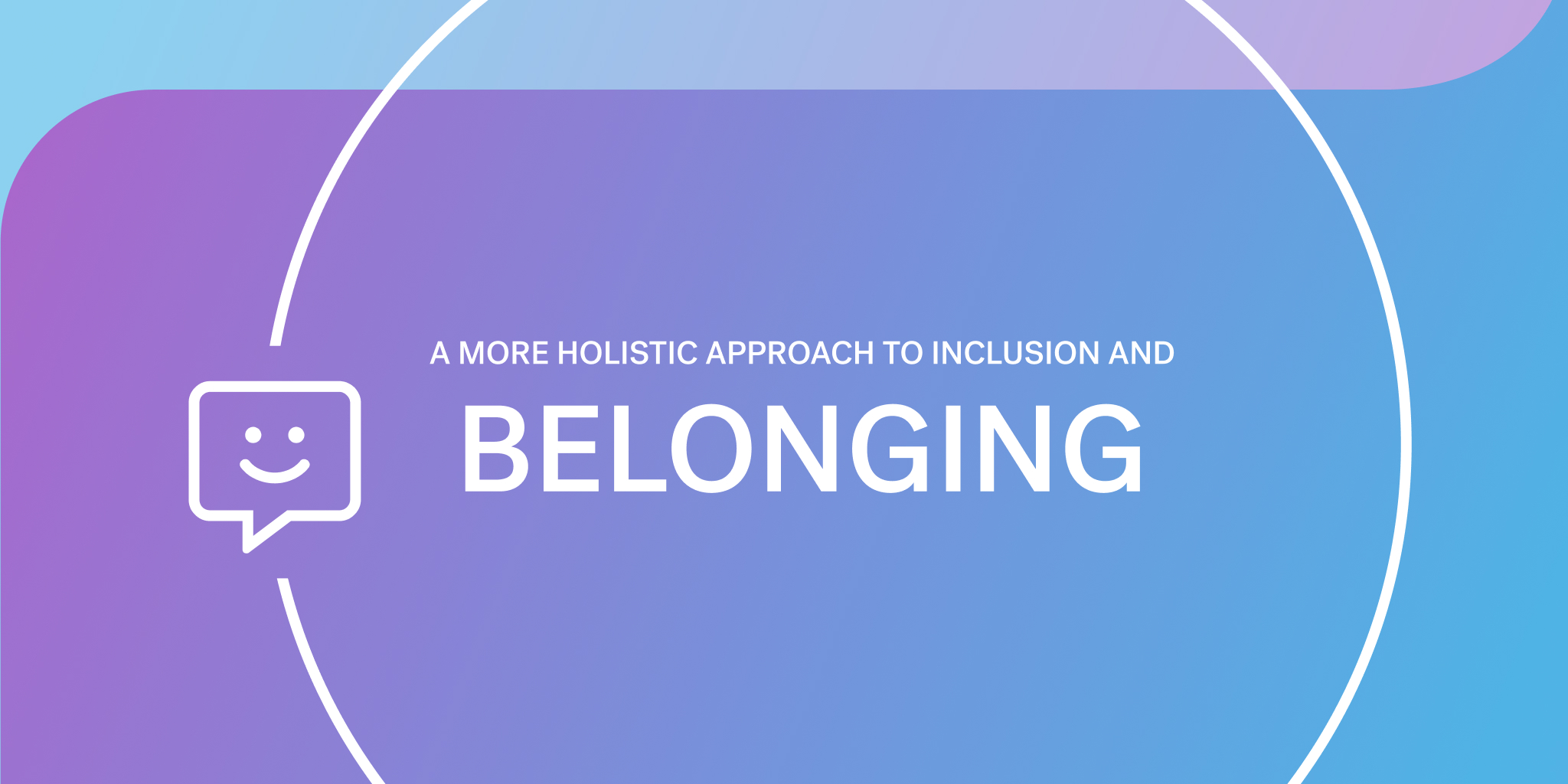A more holistic approach to inclusion and belonging

During 2020, that extraordinary year, we at Textio took the opportunity to really think deeply about what inclusion means beyond having a DEI program and diversity goals. We’ve shared some of our thoughts in a series of blogs over the past few weeks.
First, we unpacked diversity, equity, and inclusion, and arrived at a new approach to inclusion—one that is both a state of being and a course of action: be inclusive and create inclusion. We then reviewed the “flywheel of belonging” framework, illustrating the core components and amplifiers of a cultural cycle of inclusion.
We also showed how language in particular can be a belonging amplifier. Being thoughtful about the words you choose helps you be more inclusive (and less accidentally exclusionary). Finding and using a language of belonging that highlights inclusive principles like commitment to growth and teamwork also helps you attract people who are more committed to inclusion themselves. These folks will help you build a more inclusive environment for the future.
This article brings the pieces together: A holistic, language-centered approach to intentional inclusivity unites both inclusive language and the language of belonging so you can be inclusive and create inclusion at your company.
What would it look like to not only be intentionally inclusive in your talent and culture initiatives, but also aim to attract folks who personally care about inclusion? From a communication perspective, it means choosing to incorporate what we at Textio call the “language of belonging.”

Using the language of belonging in your talent content—in addition to language that is itself inclusive—creates a talent attraction “system” that builds belonging within your culture as it goes. Textio for Employer Brand guides you to use more phrases of belonging and create content that helps you connect with people who personally value inclusion. Textio for recruiting mails and job posts helps you write content that is inclusive of folks of all make-ups and experiences.
Inclusion within an organization goes beyond not alienating people. It requires an intentional effort to cultivate a culture that values inclusion and belonging—to attract team members who personally care to be in and help build a welcoming workplace.
This is a modified excerpt from the guidebook "Rethinking your approach to inclusion." Download the full guidebook here.
Thanks to Eleanor Chestnut, Tim Halloran, Becky Auerbach, Andrew Violante, and Cassie Sanchez for their contributions.